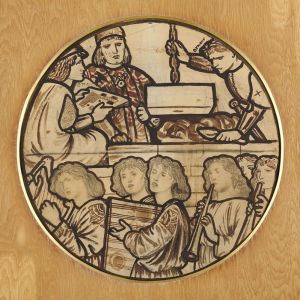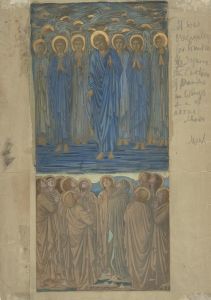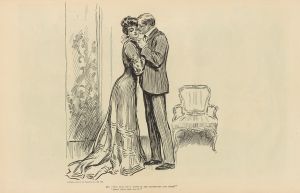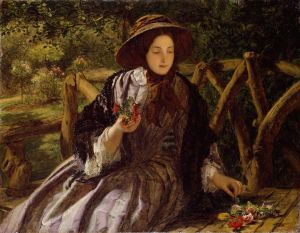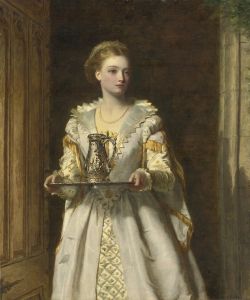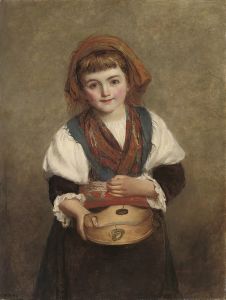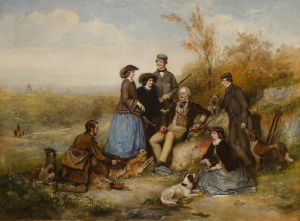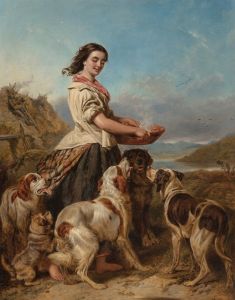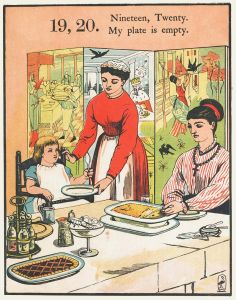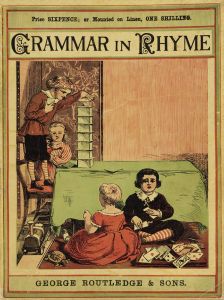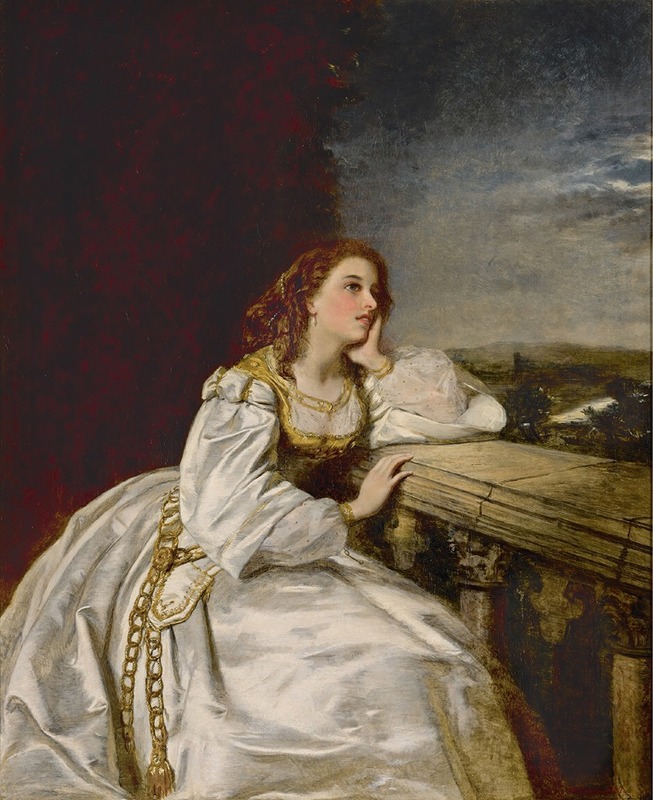
Juliet,’O that I were a Glove upon that Hand’
A hand-painted replica of William Powell Frith’s masterpiece Juliet,’O that I were a Glove upon that Hand’, meticulously crafted by professional artists to capture the true essence of the original. Each piece is created with museum-quality canvas and rare mineral pigments, carefully painted by experienced artists with delicate brushstrokes and rich, layered colors to perfectly recreate the texture of the original artwork. Unlike machine-printed reproductions, this hand-painted version brings the painting to life, infused with the artist’s emotions and skill in every stroke. Whether for personal collection or home decoration, it instantly elevates the artistic atmosphere of any space.
William Powell Frith's painting "Juliet, 'O that I were a Glove upon that Hand'" is an evocative work inspired by one of the most famous scenes from William Shakespeare's play "Romeo and Juliet." Frith, a renowned British artist of the Victorian era, is celebrated for his detailed narrative paintings that often capture scenes of contemporary life and literature.
This particular painting draws its subject from Act II, Scene II of "Romeo and Juliet," commonly known as the balcony scene. In this scene, Juliet Capulet, unaware that Romeo Montague is listening, expresses her longing for him. The line "O that I were a glove upon that hand" reflects Juliet's desire to be close to Romeo, as she wishes to be the glove on his hand so she could touch his cheek.
Frith's interpretation of this iconic moment captures the romantic and dramatic essence of the play. The painting likely depicts Juliet on her balcony, enveloped in the moonlight, conveying the intimacy and intensity of her emotions. Frith's attention to detail and ability to convey narrative through visual art are evident in his portrayal of Juliet's expression and posture, which communicate her yearning and innocence.
William Powell Frith was born in 1819 in Aldfield, North Yorkshire, England. He was a prominent figure in the Victorian art scene and became known for his genre paintings that often depicted scenes of everyday life with a touch of humor and social commentary. Frith was a member of the Royal Academy, and his works were highly popular during his lifetime, earning him both critical acclaim and commercial success.
While Frith is best known for large-scale works such as "The Derby Day" and "The Railway Station," which depict bustling scenes filled with numerous characters, his painting of Juliet showcases his ability to focus on a single figure and capture the emotional depth of a literary character. This work is a testament to Frith's versatility as an artist and his appreciation for the literary classics of his time.
The painting "Juliet, 'O that I were a Glove upon that Hand'" reflects the Victorian fascination with Shakespeare and the era's romantic ideals. It is an example of how 19th-century artists engaged with literary themes, bringing them to life through their art. Frith's work contributes to the rich tradition of Shakespearean art, where painters sought to visualize the timeless stories and characters created by the Bard.
Overall, William Powell Frith's painting is a beautiful representation of one of Shakespeare's most beloved characters and scenes, capturing the essence of youthful love and longing. Through his skillful use of composition and attention to detail, Frith invites viewers to experience the emotional depth of Juliet's soliloquy, making it a significant piece in the canon of Shakespeare-inspired art.





